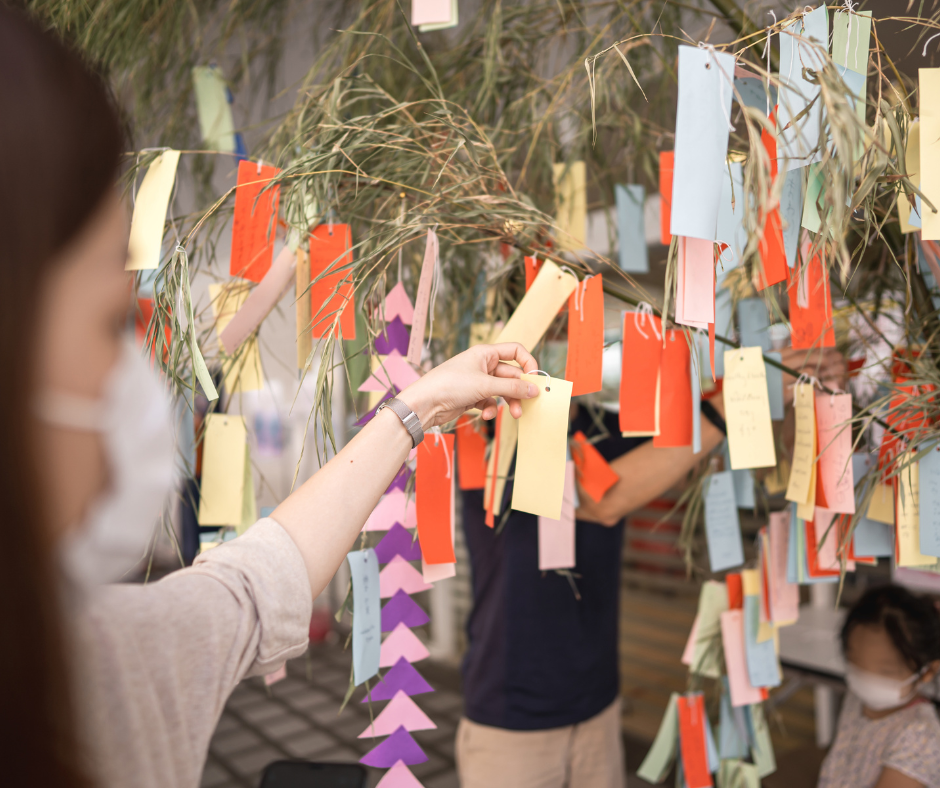
Image Source: Canva
Busy caregivers may feel there is never enough time to do a little something extra. Yes, we all know that feeling of exhaustion! When you are feeling in a creative rut, this is the time to get acquainted with your local librarians you may find your librarians’ enthusiasm and the humorous picture book illustrations will spark your creativity and energy!
Reading books that inspire creativity and provide opportunities for children to explore their abilities can help development. When children have creative opportunities, their language skills and social skills develop rapidly. Children need to touch, see, explore, and manipulate objects and ideas to learn. Creative activities can provide an emotional outlet and also focus a child’s attention on planning/problem-solving skill sets. You can set the stage by providing the three basics for creativity: time, encouragement, and materials. You already know your child’s abilities and personality. Now collect some basic, easily available materials that will appeal to your preschooler. This can be a great start for skills they will need in the elementary classroom.
These books are grouped by an emphasis on art, music, or folklore with a few suggestions for follow-up activities to spark children’s creativity and development. Let’s look at some books you can use as a springboard for creative activities.

Image Source: Canva
Pocketful of Posies: A Treasury of Nursery Rhymes, illustrated by Salley Mavor. 2010. Houghton Mifflin Books for Children.
This book contains 64 familiar rhymes. The pages are illustrated with fabric collages using colorful stitching, buttons, bark, shells, and bells to demonstrate various textures.
Last Night, by Hyewan Yurn. 2008. Farrar Straus Giroux.
A young girl is sent to bed after refusing to eat supper. She goes on a dreamlike, wordless adventure with her teddy bear. Illustrations are linoleum block prints that evoke many emotions.
In the Small, Small Pond, by Denise Fleming. 1993. Henry Holt.
Geese, minnows, and muskrats populate the pond with illustrations featuring hand-cut stencils and handmade-paper.
Below, by Nina Crews. 2006. Henry Holt.
Jack’s action figure falls through a crack in the stairs and goes on a fantastic journey. His adventures are illustrated by layered images combining photographs and line drawings.
Art Activities
Begin by reading the stories with your preschoolers and observing the illustrations they find most interesting. Discuss those illustrations and the materials used to convey the stories. Then, provide materials so they can create their own stories of fantasy world adventures. The first time, you may want to keep it simple and just use photos from magazines. If you circle back to this idea a few weeks later, your child will probably come up with their own ideas for other interesting materials to use.
Another activity you could do is to make relief collages by layering various materials on a paper or cloth background. Materials may include magazine pictures or print, construction paper, newsprint, felt, buttons, shells, leaves, and cloth that has been cut or torn.
Children could also make prints using sponges cut into different shapes and dipped into tempera paint. Let the prints dry and then add another layer in contrasting color. This may provide an opportunity to point out colors that blend to form a new color where the prints overlap (Red + blue = purple, etc.).
Books with Music Lyrics
The Wheels on the Bus, adapted and illustrated by Paul O. Zelinsky. 1990. Dutton.
The pull tabs and flaps used to narrate this story make it an interesting but also delicate book for children to handle.
Sing, lyrics and music by Joe Raposo. Illustrated by Tom Lichtenheld. 2013. Henry Holt.
A recording of the Sesame Street song is also included.
Tweedle Dee Dee, by Charlotte Voake. 2008. Candlewick.
This story is based on the song “The Green Leaves Grew All Around.” It follows two children as they interact with nature, observing animals, and learning about the world around them.
There Was an Old Monster! by Rebecca, Adrian, and Ed Pemberley. 2009. Scholastic.
“There Was an Old Lady Who Swallowed a Fly” is rewritten to feature a monster with illustrations of the contents of his stomach!

Image Source: Canva
Music Activities
Preschoolers will enjoy singing along with these stories. Record your sing-along session using a tablet, computer, or cell phone This might be a great way to showcase classroom learning with families by sending the recording electronically! Then, encourage preschoolers to compose original songs or illustrate scenes from these songs with pencil and paper. You may then want to write the line under your child’s drawing to encourage reading skills. If you are doing this activity with a group, the children may enjoy combining their drawings to make a book of illustrations.
Songs can be an introduction to rhyming. Ask preschoolers to listen for sounds that repeat. They can tap their chest every time they hear a sound or word that is similar. Afterward, discuss the concept of patterns in music and art. Additionally, you could have children draw or create patterns by tracing around common objects or cookie cutters.
Books Featuring Folktales
Anansi the Spider: A Tale from the Ashanti, by Gerald McDermott. 1972. Henry Holt and Company.
When Anansi gets in trouble, his children work as a team to save him.
Thunder Cake, by Patricia Polacco. 1990. Philomel Books.
This book tells the legend behind loud storms as related by a grandmother to her granddaughter.
Moon Rope/Un laza a la luna, by Lois Ehlert. 1992. Harcourt.
Fox and Mole take a trip to the moon and a folktale explains the origin of “the man in the moon.”
Joseph Had a Little Overcoat, by Simms Taback. 1999. Viking Children’s Books.
Preschoolers will enjoy this tale of making something out of nothing. They will probably chime in where lines are predictable.
Folktale and Cultural Activities
Create a prop box or tote filled with costumes, puppets, props, and hats related to the stories. Be on the lookout for items relating specifically to the cultures in the story. Sometimes these items can be found inexpensively at a garage sale or in a store clearance cart. Neighbors and grandparents may be recruited to watch sales for books or cultural items. Many small towns celebrate their heritage days with summer parades featuring colorful costumes; these celebrations could also be a good time to acquire cultural items.
Choose an exciting time in your child’s life and retell it using something from the prop box. Then suggest your child pick a recent event and tell his version using the props. If you know an older person living nearby, they may be willing to talk about one of their childhood experiences. Make a recording for later listening/retelling. This could be the start of your own family folklore!
Learn about different countries by sampling traditional foods found at your grocery store or specialty store. It might be fun to try out foods that are mentioned in the picture books! You may want to discuss two possible menus before shopping to better utilize your time in-store and keep entrees within your own abilities to prepare. Also, grandparents and neighbors may be eager to share traditional recipes from their countries of origin.
Introduce simple songs from different cultures. You can probably locate some community resources through your librarian, elementary music teacher, or the community college teachers and students involved in English Language Learner classes.
Display a world map at child level on the refrigerator. Have stickers or magnets available so that with a bit of direction, your child can mark your hometown and the countries where the folktales originated. For more ideas check out Fit and Healthy Kids Discover and Design .
Conclusion There are so many other books that may provide a springboard to creativity. Browse your local library to find the above-mentioned titles or ask your librarian to recommend other picture books! Hopefully, your time involved in collecting books/materials brings rich rewards in the form of your child’s creative involvement in the arts, expanding awareness of community, and expansion of children’s language and social skills.
LADONNA WERTH, EXTENSION EDUCATOR | EARLY CHILDHOOD EXTENSION
Peer Reviewed by Lynn DeVries, Lisa Poppe, and Jackie Steffen, Extension Educators, Early Childhood Extension
Make sure to follow The Learning Child on social media for more research-based early childhood education resources!
















